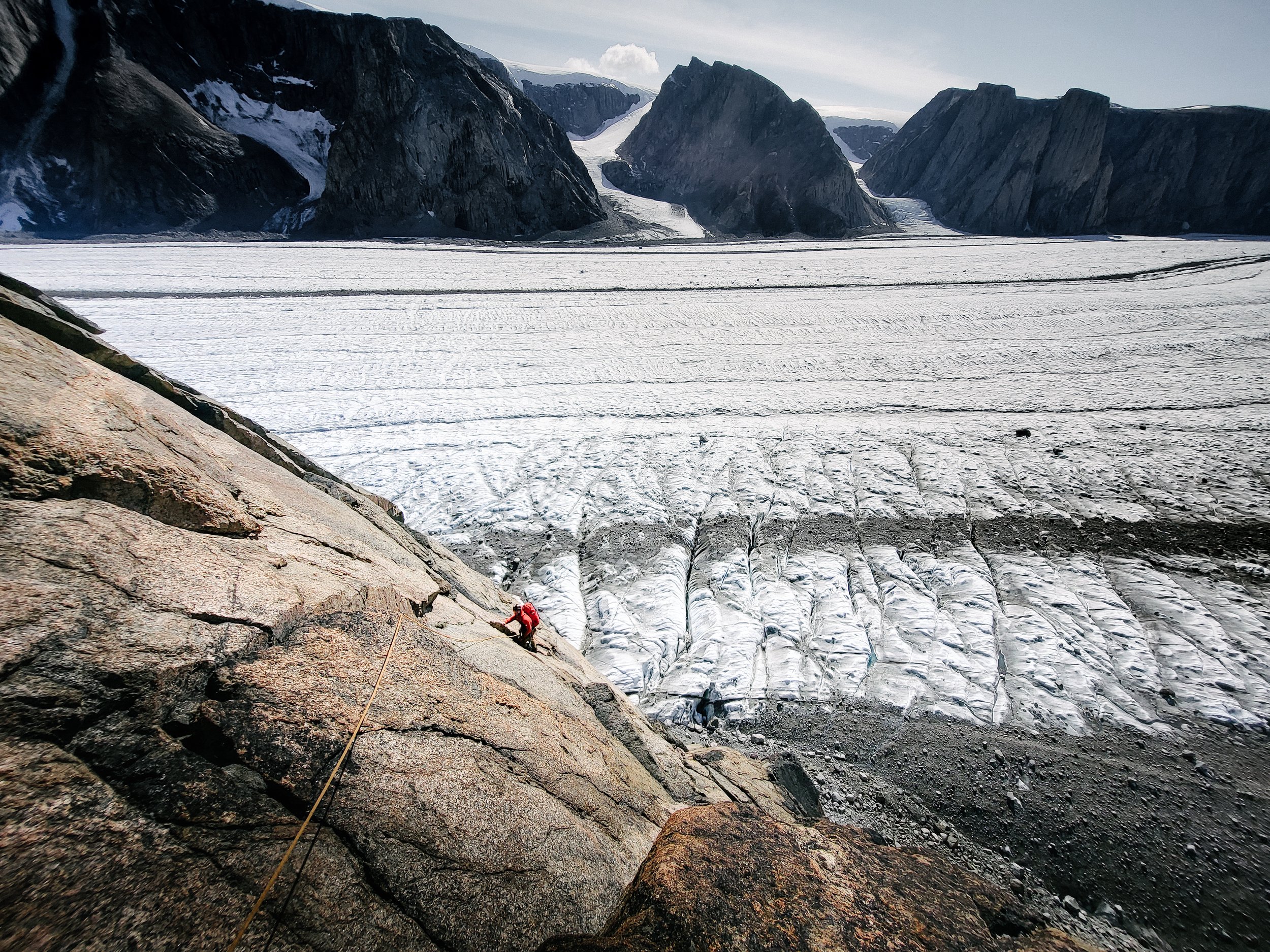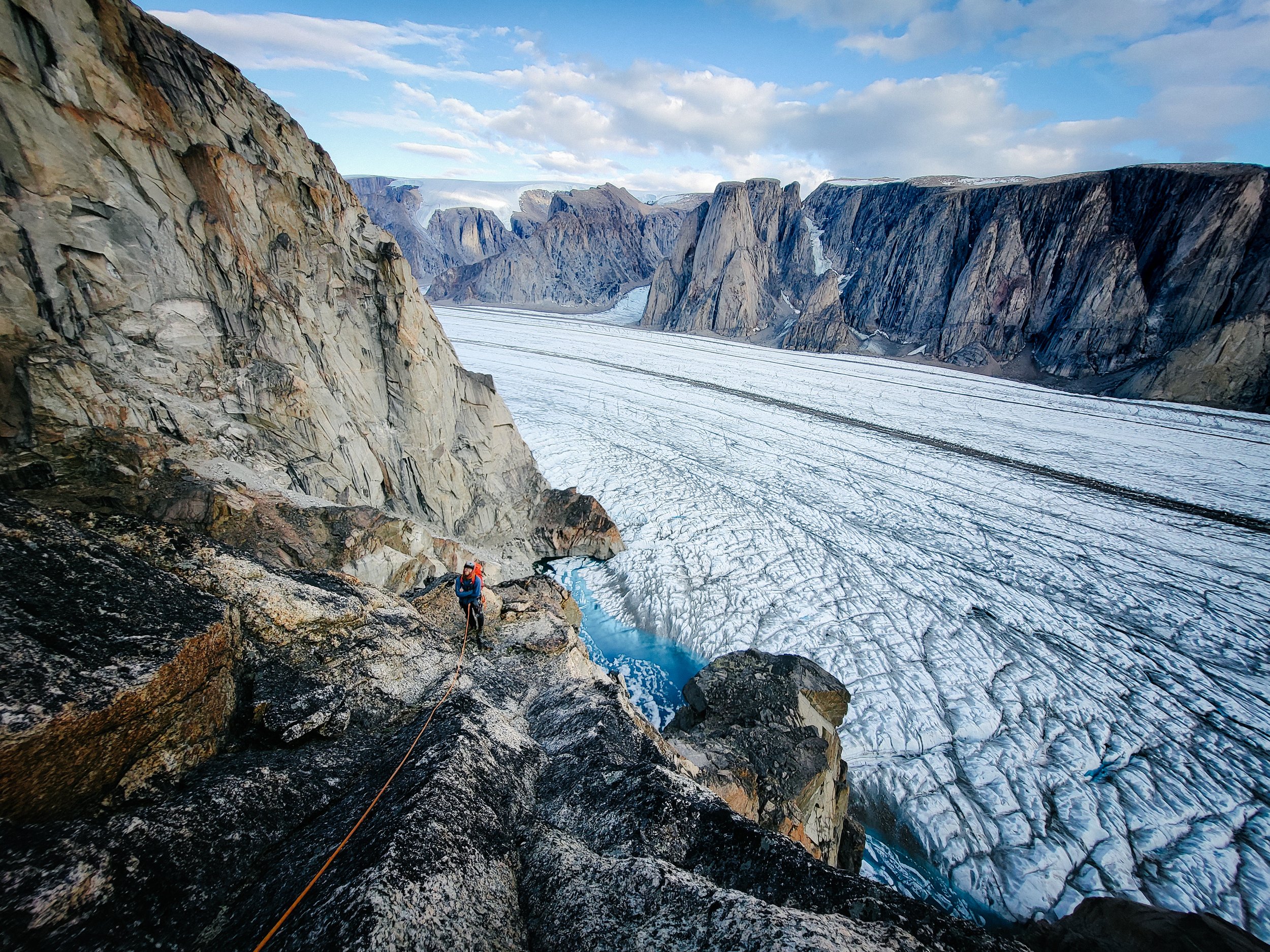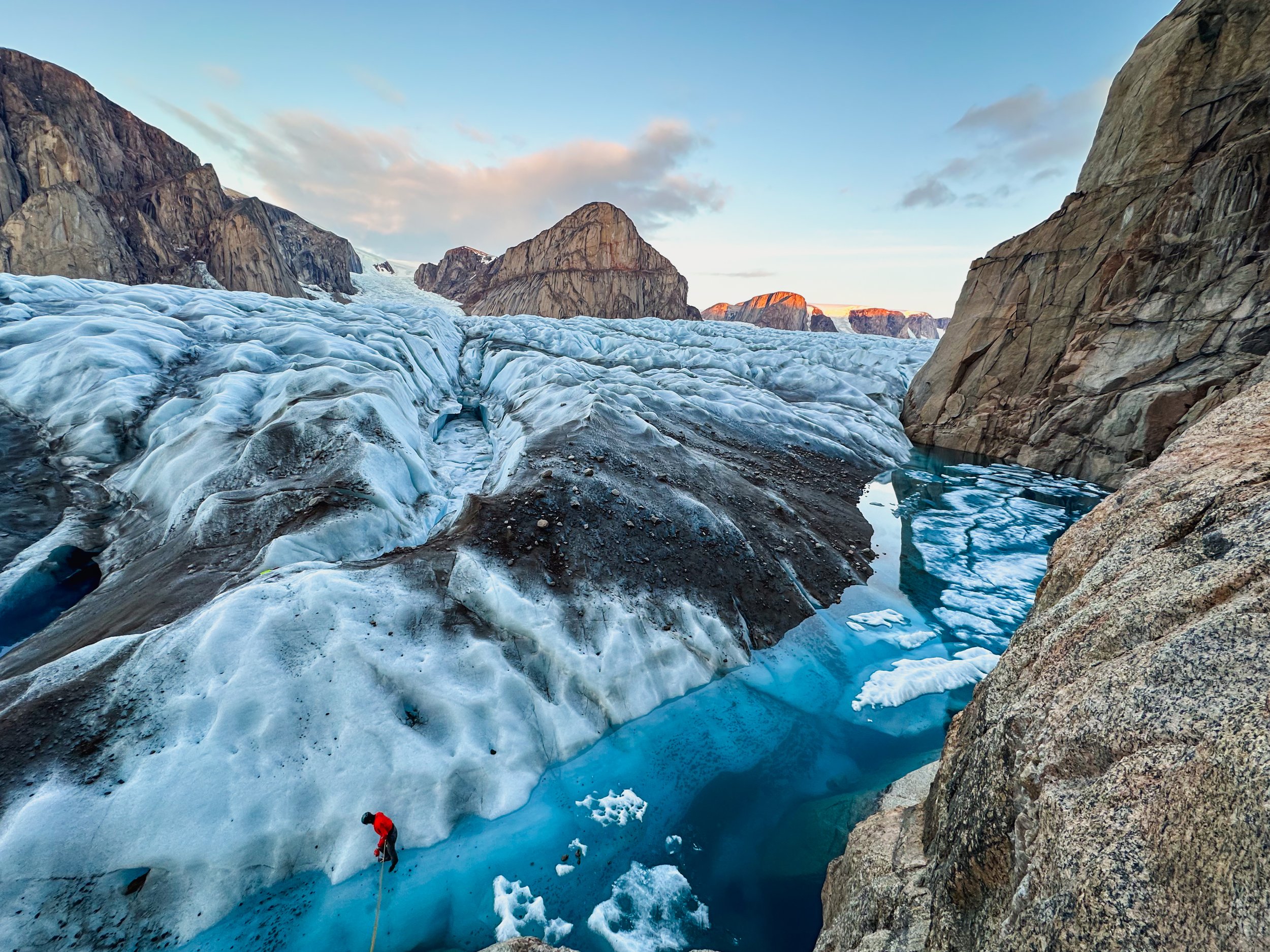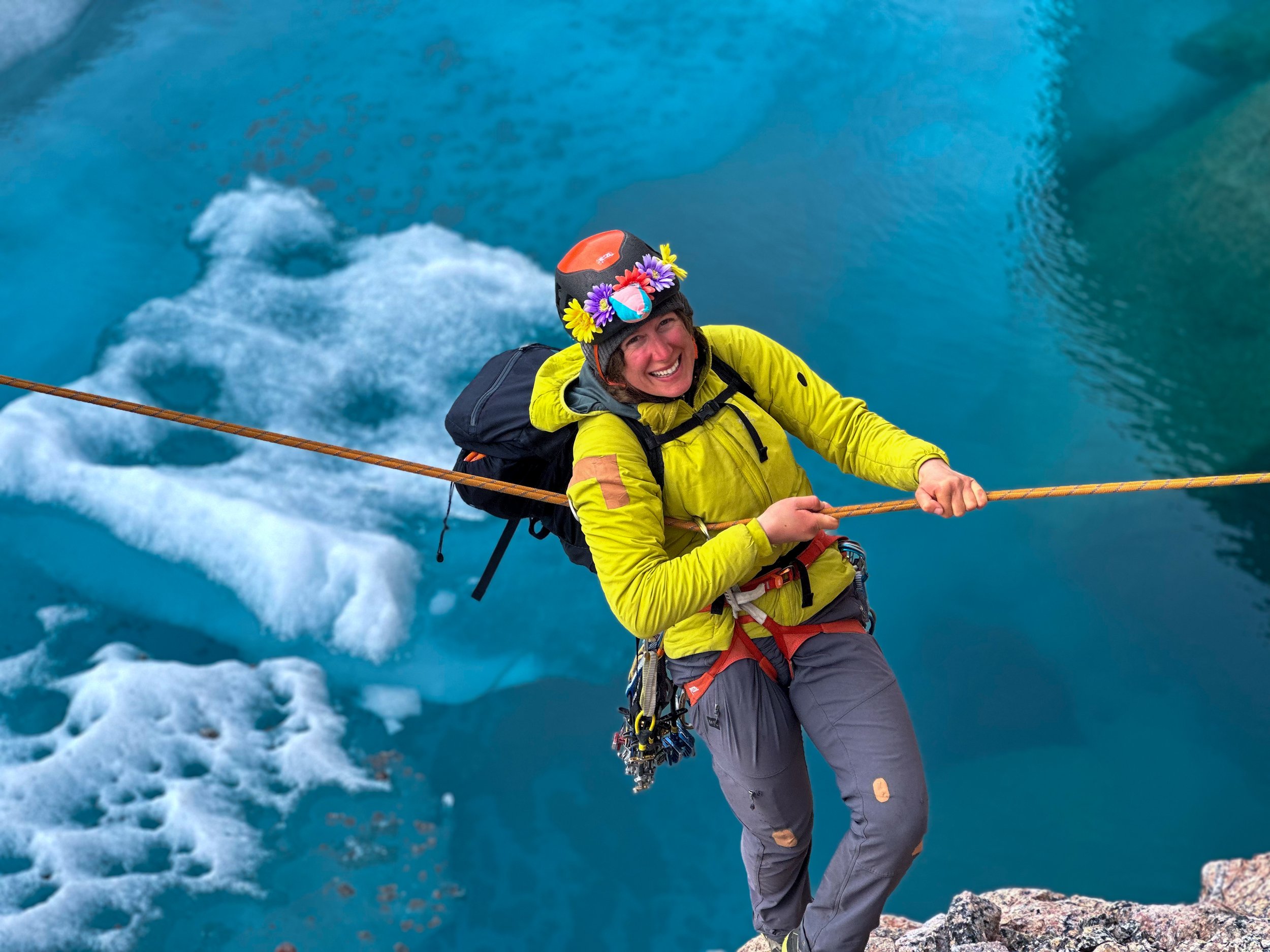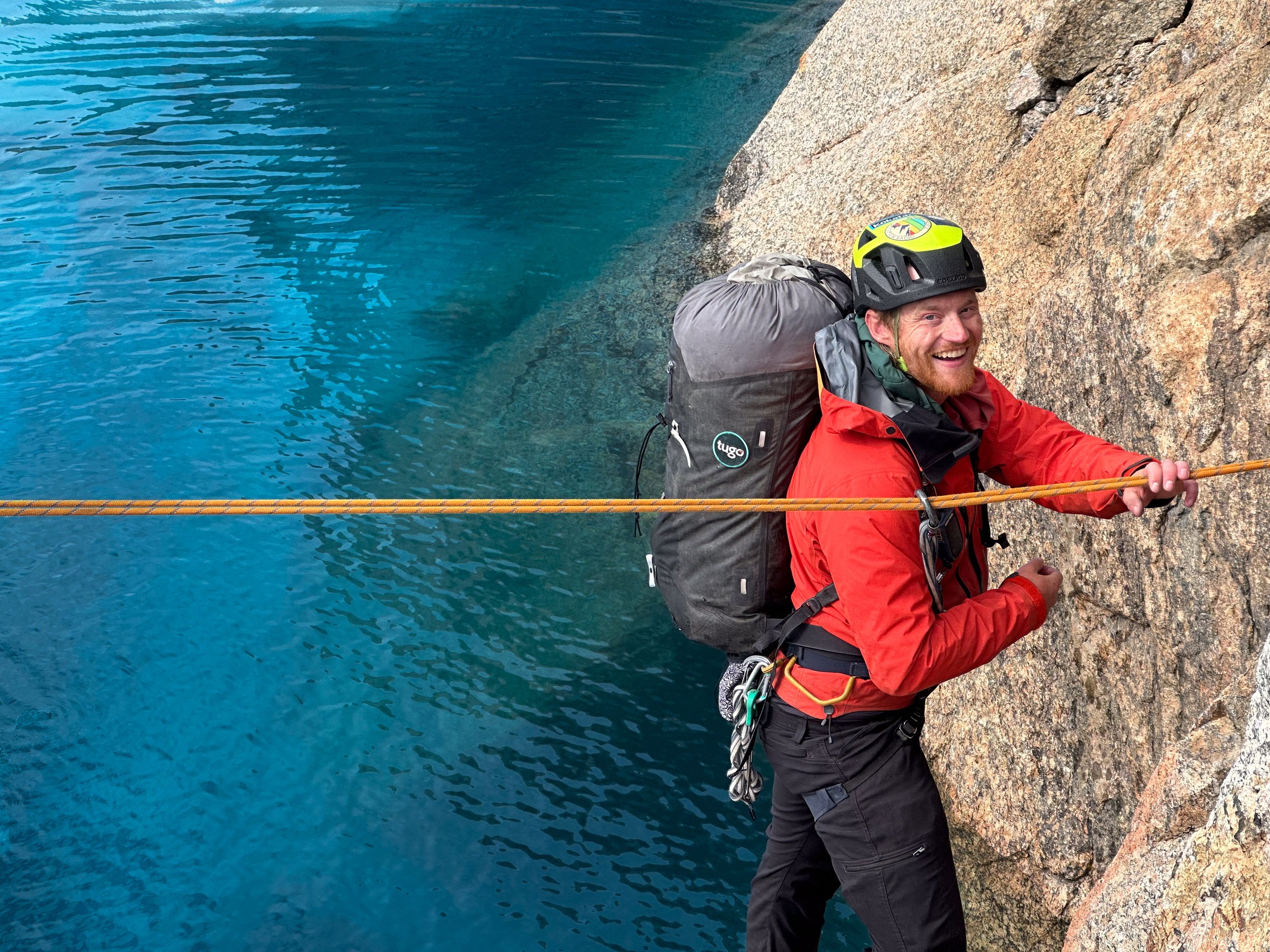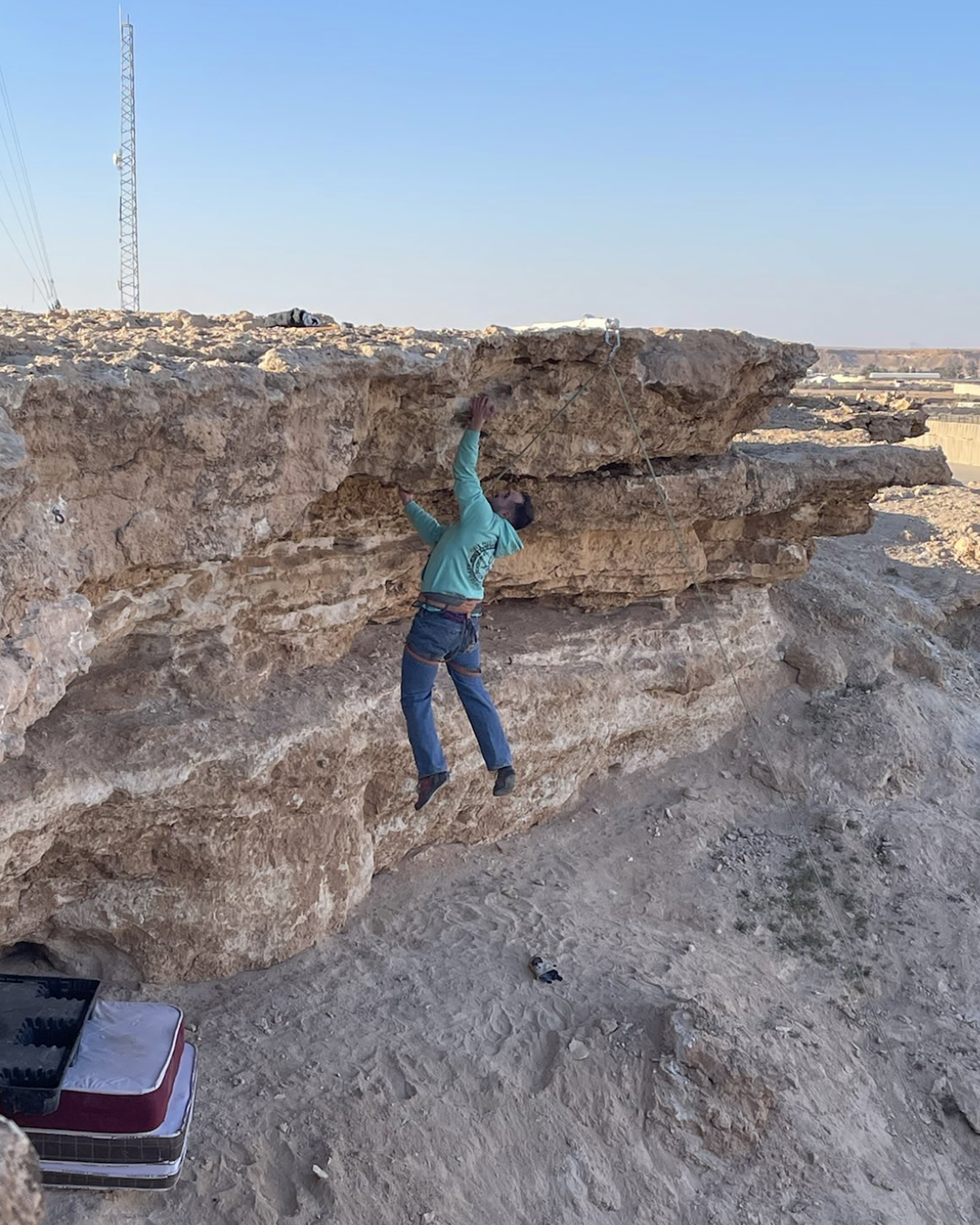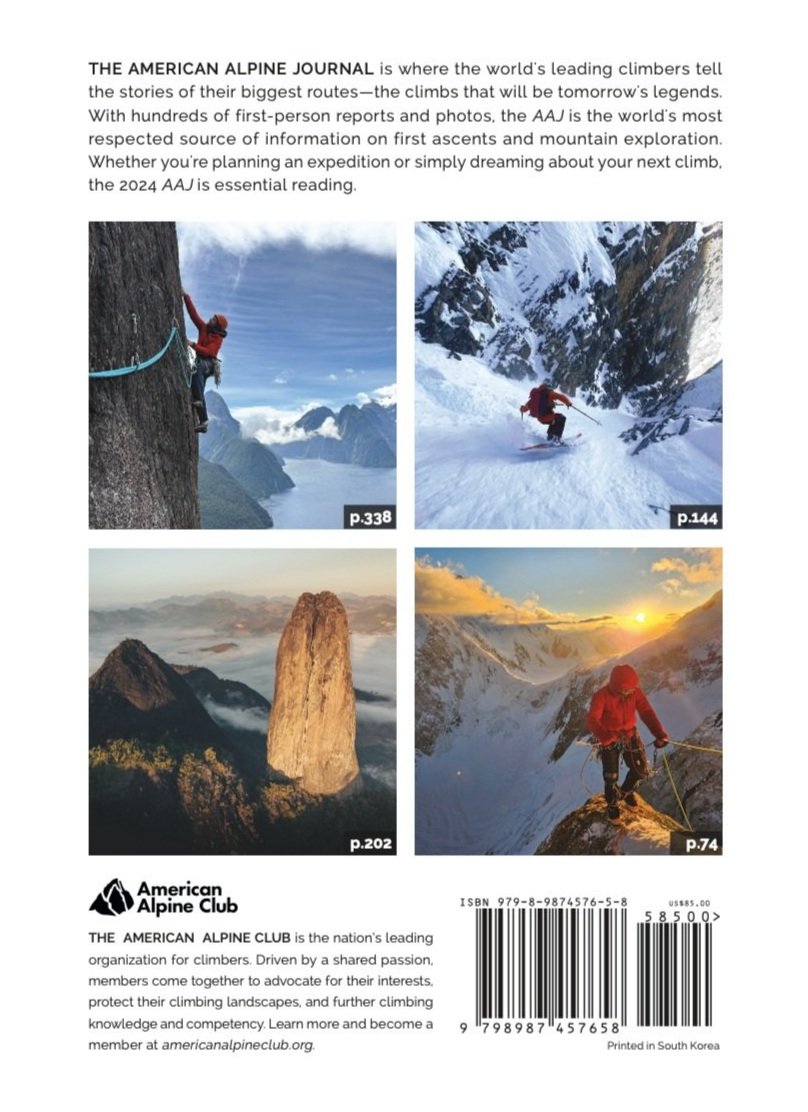Noah Besen Climbing. Photo by James Klemmensen.
A Story from the 2023 Cutting Edge Grant
By: Sierra McGivney
Noah Besen didn't expect to find the Atlantic Ocean frozen in the middle of July outside of Qikiqtarjuaq, a hamlet on Broughton Island, in the Nunavut territory of Canada, off the coast of Baffin Island.
Billy Arnaquq, a local outfitter and guide, remarked, that there was a lot more sea ice than normal for this time of year. The plan had been to kayak to Coronation Glacier, about 75 or 80 kilometers from town, and then hike up and into the glacier. From there, they would attempt to ascend granite walls accessible from the glacier. Besen and the rest of the team, James Klemmensen, Shira Biner, and Amanda Bischke, wanted the expedition to be as human-powered as possible, but there were apparent limitations. They couldn't unfreeze the ocean…And they had about 1,000 pounds of gear.
About 20 kilometers south of town, the ice was beginning to break up, so the trip was still very much within reach. Arnaquq snowmobiled them out with a big load of their gear to the southern limit, where they stashed their equipment on a little island. They wanted to start the expedition with a human-powered effort, even if it meant changing their original plan. He snowmobiled them back, and they began their journey, walking across the sun-pocketed ice with day packs back to their stashed gear, seals and icebergs lining the way.
“That was the first big crux,” said Besen.
Noah Besen in the front and Shira Biner in the back of the boat. Photos by James Klemmensen.
Once on the island, they decided to wait out the ice breakup, thinking it would only take a couple of days. A week passed, so they took matters into their own hands and planned a “staged gear shuttle.” The 24-hour sun poured over them as they dragged their gear to the ice's edge. Dry suits on and boats packed, they individually heaved their boats until the ice cracked and they plopped in. Four days later, they saw the Coronation Glacier flowing into the ocean.
Ten kilometers up the Coronation Glacier, they made their basecamp, where the glacier splits into two forks, surrounded by huge rock cliffs. They would stay on the glacier for 20 days. Now, the climbing would begin.
The team spent days on the glacier with binoculars in hand, scouting out different possible rock climbs and sometimes hiking for hours to get a better angle on certain features. Klemmensen and Besen found a route near their base camp and “just went for it.”
“We brought enough stuff that we're like—if it doesn't make sense, we have what we need to … just epic back down,” said Besen.
Twenty hours of climbing on multicolored alpine granite later, the two put up a new route, Salami Exchange Commission (800m, V 5.10). They slept on the top of the wall and spent the next day returning to base camp.
Photo by James Klemmensen.
Blank chossy walls near camp stymied Bischke and Biner, so they decided to venture to another section of the glacier. Four thousand-foot walls loomed over them as they searched for a choss-free wall to climb. A lower feature snagged their attention. Psyched, they put up a new route, The Big G (350m, III 5.8 ).
Storm clouds gathered, and rain descended on the team, staying for a week. The days drizzled by. Once the week was up, the rain cleared, and the walls dried. Besen and Klemmensen started another epic.
From far away, Escape from Azkaban looked heinous; blocky rocks and blank faces seemed to greet the two, but once up closer, perfect splitter cracks formed the route. The route was 650 meters and had the most challenging climbing on the trip, with the grade of IV 5.10+.
“It proved to be the best alpine rock I've ever climbed in my whole life,” said Besen.
The journey back was the inspiration for the name. After topping out, they descended an easier-looking route involving some scrambling. They popped out on a side glacier that connected to the main Coronation Glacier that their base camp was on. Glaciers are constantly moving, creating, and ever-changing. This side glacier had carved out a canyon with raging river rapids, between 60 and 70 feet deep, completely impassable.
At three in the morning, the two ate the last food, mulling over their unfortunate circumstances. The sun hovered on the horizon—all hours normally considered night appearing like sunset—allowing endless daylight hours for their epics. They journeyed around the river and onto a boulder field with water running underneath it.
“The name came from us feeling trapped and needing to escape,” said Besen.
Photo by James Klemmensen.
Bischke, Biner and Besen attempted another route, but unfortunately, had to bail. The rock had become very loose, so they decided to put in a couple of bolts and abandon the project. After returning, both groups finished the trip together on one last attempt.
Cerulean water pooled on the sides of the glacier, forming deep, bottomless basins in between the bedrock and the glacier. Besen, Bischke, Biner, and Klemmensen stared down at the water, the rock on the other side just out of reach, but they started to get to work. Besen had brought his dry suit on the glacier in case they might have to ford a raging river. They constructed an anchor using ice screws and lowered Besen into the water.
“I didn't have to swim that much. I got into about my chest, and I was able to lean, reach, and scurry up,” said Besen.
From there, they built a Tyrolean traverse and shuttled across and soon found themselves at the base of a cliff. The crux of their climb brought them to a steep hand crack. They topped out farther from the ocean than their previous climbs, seeing the Penny Ice Cap stretch across the expanse. They called the climb Raise the Drawbridge (400m, III 5.10-).
They rappeled down in the dark; it was the first time Besen had experienced true night the whole trip. The season was changing. Their journey was coming to an end but was not over yet.
Photo by James Klemmensen.
By the time they reached the rock that bordered the glacier, the sun began to rise. They still had one more crux: the glacial basins. Crossing back onto the glacier, the ice was tilted upwards, forcing Besen and the team to climb out of the water. Besen had only brought Crocs with him besides his mountaineering boots. There was only one real solution. Besen donned his Crocs, fitting his crampons to them, and shimmied up the other side. He set up a zipline for the others to come down.
They strolled into basecamp, the glacial ice gleaming, and watched an unbelievable sunrise.
“It was a beautiful moment, too, because we all had this awesome success on this route together,” said Besen.
The way back was quiet save for laborious gear shuttles and near encounters with polar bears. Big polar bear footprints were left in the sand at their camp near Qikiqtarjuaq. Luckily, Arnaquq had spotted the polar bear 300 meters from their camp and warned them to go uphill. Nothing was destroyed or taken, just a clear path the bear had taken through camp. Once they made it to Qikiqtarjuaq, the group camped and waited out their delayed flights.
From right to left Noah Besen, Shira Biner, Amanda Bischke. Photo by James Klemmensen.
“For a lot of climbers, us included, Baffin Island has taken on this sort of mythical sense,” said Besen.
Recent films featuring climbing adventures on Baffin Island, like Sean Villanueva O'Driscoll’s Asgard Jamming and Dodo‘s Delight, inspired the group. After Googling, they stumbled upon a painting by the late Corey Trepanier of the Coronation Glacier. They studied his reference photo, noting the large granite walls surrounding the mass of ice. From there, the idea of this trip started to take form.
There is still so much potential for exploration on Baffin Island. “This area is really special. I think that more teams or even stronger teams—because we're not pro athletes by any stretch—should go and check it out because we didn't even do the biggest, craziest things at all. There's a lot more to be done,” said Besen.
If you have a cutting edge idea, apply to the Cutting Edge grant today!



